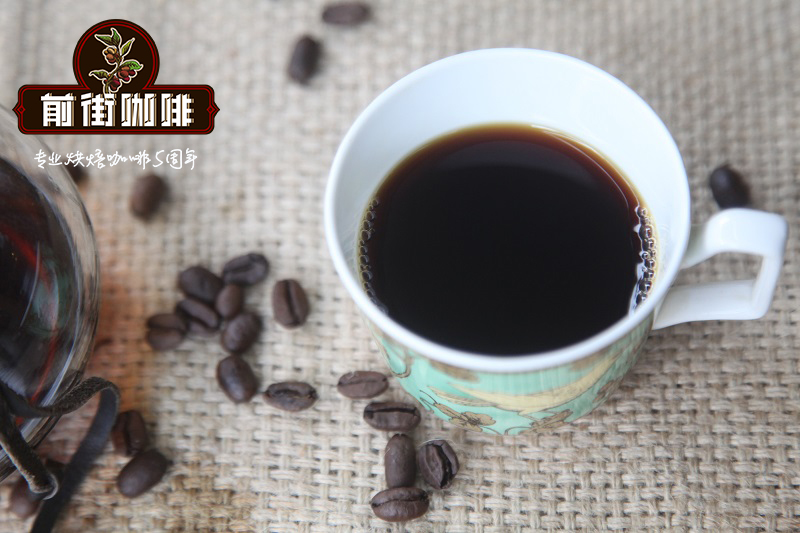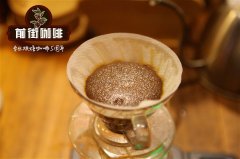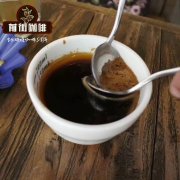What kind of Brazilian coffee are there in Brazilian coffee producing areas? description of the flavor of Brazilian coffee brewed by half-sun treatment

Professional coffee knowledge exchange more coffee bean information please follow the coffee workshop (Wechat official account cafe_style)
Brazil is the largest coffee producer in the world, providing nearly 45% of the world's coffee raw beans. The length of the country's dry season may even affect coffee prices around the world. The main producing areas of Brazilian coffee are Minas Gerais Minas Gerais, S ã o Paulo Sao Paulo, Bahia Bahia and Esp í rito Santo Espirito Santo, which account for 90% of the country's exports. Our common Santos Santos and Mochiana Mogiana come from S ã o Paulo. Sirado Cerrado and South Minas Sul de Minas in Minas Gerais are located in the west of Minas Gerais because of their high altitude and high yield of fine Brazilian coffee beans. For a flat plateau, 750m--1200m above sea level. The hilly woodland where South Minas is 700m-1200m above sea level is the earliest production area of Brazilian coffee. Due to the increase in labor costs, it is now mostly harvested by machinery, and it is also the earliest commercialized area of coffee. We can see that many large exporters are also standing here. Bahia, located in the north of Brazil, mainly produces washing in Brazil, and Espiritu Santo, near the sea, is the main export area of Brazilian Robusta varieties. In Brazil, there are water washing, honey treatment and sun treatment, but the most common is the sun treatment.
Brazilian coffee processing method
80% of Brazilian coffee beans are dried coffee, and the remaining 20% are semi-dried and washed. Its coffee taste characteristics are different, but high-quality coffee slightly tends to use semi-dry treatment. However, the drying method still has a deep-rooted popularity. When it comes to the difference between drying and semi-drying.
Drying method
The so-called drying method is the way in which the harvested coffee cherries go directly into the drying process after rough selection, and the raw beans are removed after shelling. It is a traditional Brazilian method, and the Japanese are also very familiar with it, and it can also be said to be the origin of Brazilian coffee.
Semi-drying treatment
In recent years, much attention has been paid to the method of rough selection of the harvested coffee cherries, which is stirred by a blender to remove the pulp, enter the drying process, and remove raw beans after shelling.
The immature coffee can be removed by stirring in a blender. Therefore, compared with the drying method, the semi-drying treatment can improve the accuracy and reduce the difference caused by coffee plants.
Drying condition of semi-dry coffee
In pursuit of delicious Brazilian coffee. The export specifications of Brazilian coffee are classified and equal. This export specification is determined by the number of defective beans mixed and the size of beans, so the number of defective beans mixed is small and the larger the beans are, the higher the specification is, but the coffee producing area of Brazilian coffee is wide and the coffee characteristics of each producing area are very obvious. Although the above refining method will change the flavor nature, it has nothing to do with the export specifications of Brazilian coffee.
Brazilian coffee plantations range from large farms mechanized on flat land to small farms harvested artificially in mountain areas. There are no shade trees for shade in Brazilian coffee plantations. Coffee trees are exposed to the sun to grow into fruit. In fact, this condition has some problems in making delicious coffee. Coffee fruits that have been exposed to sunshine for a long time are instantly ripe. On the other hand, sweet and mature coffee must go through the temperature difference between cold and hot, which has a lot to do with the limitation of sunshine time.
The coffee cultivated in the flat large coffee plantation at an altitude of 850 MULTHI 1200m is mostly neutral coffee with a slightly smooth taste.
In contrast, the coffee produced in the mountains in Brazil is slightly higher above sea level and the sunshine time is limited due to the slope of the hillside. As a result, the coffee fruit can be ripe on the tree for a longer time, so it can harvest coffee with high maturity, sweet and sour taste. (for example, tomatoes are also ripe on trees. The fruits are sweet, rich and delicious! )
Both individual coffee and commercial coffee, which represent Brazilian coffee, are produced in this type. The coffee has a smooth taste and is suitable for use in coffee that is easy to mix, such as mixed coffee.
CarumondeMinas's coffee.
This is the most conspicuous area of Brazil at present, the agricultural garden that is often imagined as the mountain belt of Central America and Guatemala, and the large number of agricultural gardens that are harvested manually without machinery and dedicated to quality. Drink the coffee produced here, with a strong sour taste, sweetness and taste unlike Brazilian coffee, you can feel a good balance. There are many farms that are often favored by Cup Of Excellence, and they produce high-quality coffee to the extent that farms in other areas are hesitant to participate in Cup Of Excellent.
Qianjie suggestion [Brazilian Coffee] suggestion:
V60According to one minute and fifty seconds, V60According to 15 ℃
Flavor: chocolate, creamy peanut, Xuanmi tea
Qianjie coffee: Guangzhou bakery, the store is small but a variety of beans, you can find a variety of unknown beans, but also provide online store services. Https://shop104210103.taobao.com
Important Notice :
前街咖啡 FrontStreet Coffee has moved to new addredd:
FrontStreet Coffee Address: 315,Donghua East Road,GuangZhou
Tel:020 38364473
- Prev

The flavor characteristics of Brazilian coffee describe how to drink handcups. Classification system of flavor elements of coffee beans
Professional coffee knowledge exchange more coffee bean information please follow the coffee workshop (Wechat official account cafe_style) Brazil is the largest coffee producer, providing nearly 45% of the world's coffee raw beans. The length of the country's dry season may even affect coffee prices around the world. Brazil is the largest country in Latin America and the world's largest coffee producer in the past 150 years. The world
- Next

Brazilian coffee beans Brazilian coffee taste how to make Brazilian coffee Brazilian coffee flavor
Professional coffee knowledge exchange more coffee bean information please follow the coffee workshop (Wechat official account cafe_style) in addition to Colombia, another coffee country in South America is Brazil. Brazil is the world's number one coffee producer, producing 2.6 million metric tons last year, accounting for about one-third of the world's output. However, coffee experts generally have a low opinion of Brazilian coffee beans as too monotonous and bitter.
Related
- Detailed explanation of Jadeite planting Land in Panamanian Jadeite Manor introduction to the grading system of Jadeite competitive bidding, Red bid, Green bid and Rose Summer
- Story of Coffee planting in Brenka region of Costa Rica Stonehenge Manor anaerobic heavy honey treatment of flavor mouth
- What's on the barrel of Blue Mountain Coffee beans?
- Can American coffee also pull flowers? How to use hot American style to pull out a good-looking pattern?
- Can you make a cold extract with coffee beans? What is the right proportion for cold-extracted coffee formula?
- Indonesian PWN Gold Mandrine Coffee Origin Features Flavor How to Chong? Mandolin coffee is American.
- A brief introduction to the flavor characteristics of Brazilian yellow bourbon coffee beans
- What is the effect of different water quality on the flavor of cold-extracted coffee? What kind of water is best for brewing coffee?
- Why do you think of Rose Summer whenever you mention Panamanian coffee?
- Introduction to the characteristics of authentic blue mountain coffee bean producing areas? What is the CIB Coffee Authority in Jamaica?

